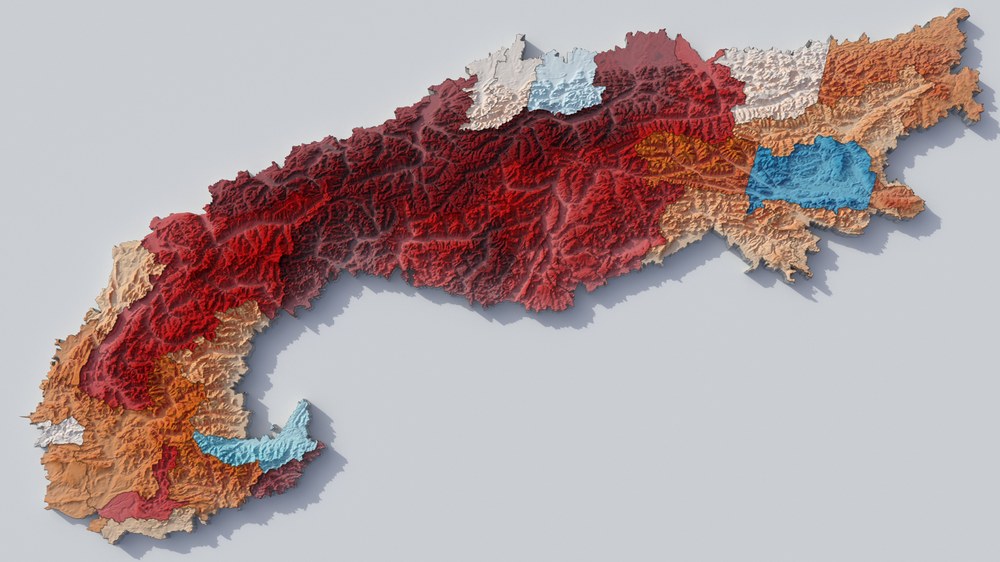Earth observation data reveal snow deficits in the Alps
For the second year in a row the Alps have experienced a winter with exceptionally low snowfall. EOC researcher have now analysed how the last snow season compares with those of the past 38 years. To accomplish that they studied over 15,000 satellite images covering the entire Alpine region. The result was that this spring the snow line averaged 166 m above the longstanding mean value.
The research team studied the location of the snow line in the Alps during the snow season that has just passed as an indicator for the degree of regional snow cover – the higher the snow line the less snow is available. In addition to winter tourism it also plays a crucial role in the water supply for large parts of Europe since springtime meltwater feeds large rivers like the Rhein, Po, Rhone and Donau.
Although the snow season that began in November and December was quite promising, the snow had melted already in January, especially at the northern border of the Alps due to mild temperatures and scarce precipitation. On the upper reaches of the Rhein, at Lake Constance, as well as on the Inn and Salzach rivers the snow line was then between 500 and 1000 m higher than the long-time average. By February and March this snow deficit had also spread to France, Italy, and Switzerland – only in eastern Austria was there above average snowfall. Although this season’s snow line was less extreme than last year’s in northern Italy, this time the entire Alpine region was more uniformly affected by a snow deficit. Especially at the French border of the Alps there was consistently little snow cover this past season. Persistent aftereffects of last year’s drought and a winter with little snowfall made it necessary for the government to limit water use in five Alpine Departements already in the beginning of March – which was earlier than ever before.
The researchers derive the snow line from data recorded by the Landsat earth observation satellites, which have continuously provided images of the land surface since the 1980s. This makes it possible to produce long-time data records of the snow situation in the Alps, in addition to other information. Thus it can be determined how particular years have experienced exceptionally little snowfall compared with the long-time average, and that, for example at Lake Constance and in the French Alps the snowline has reached new springtime height records.


